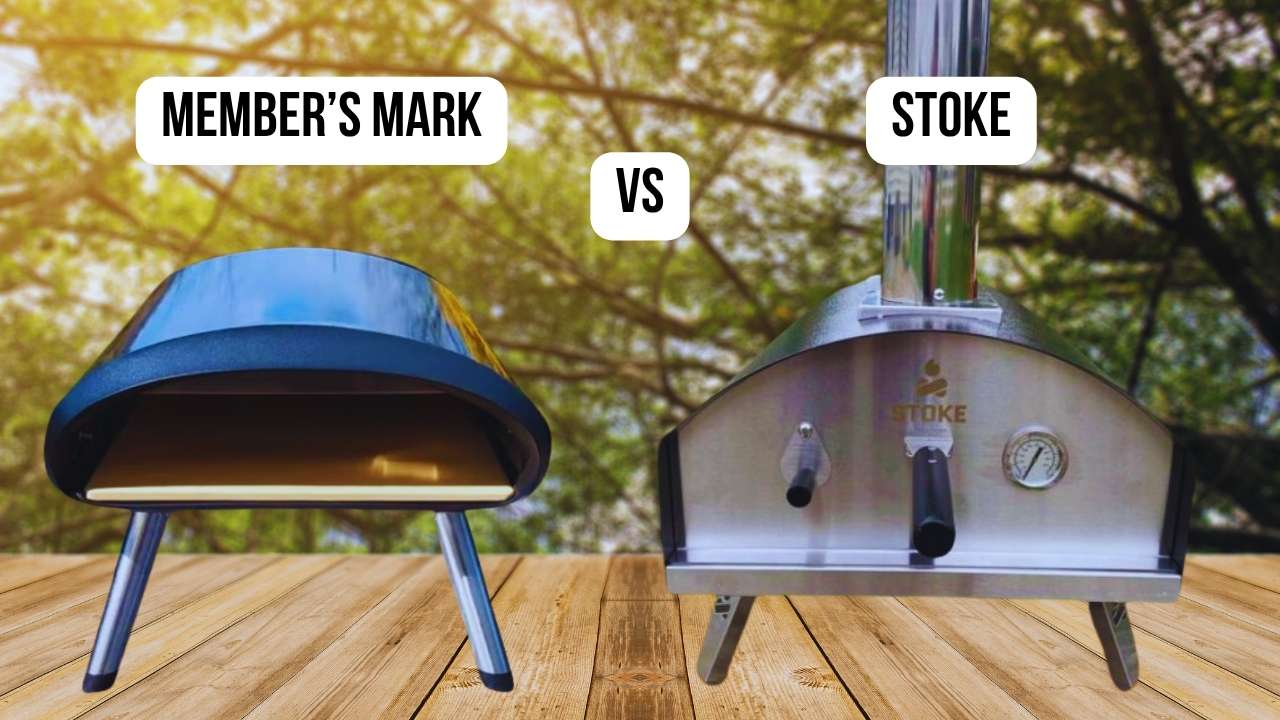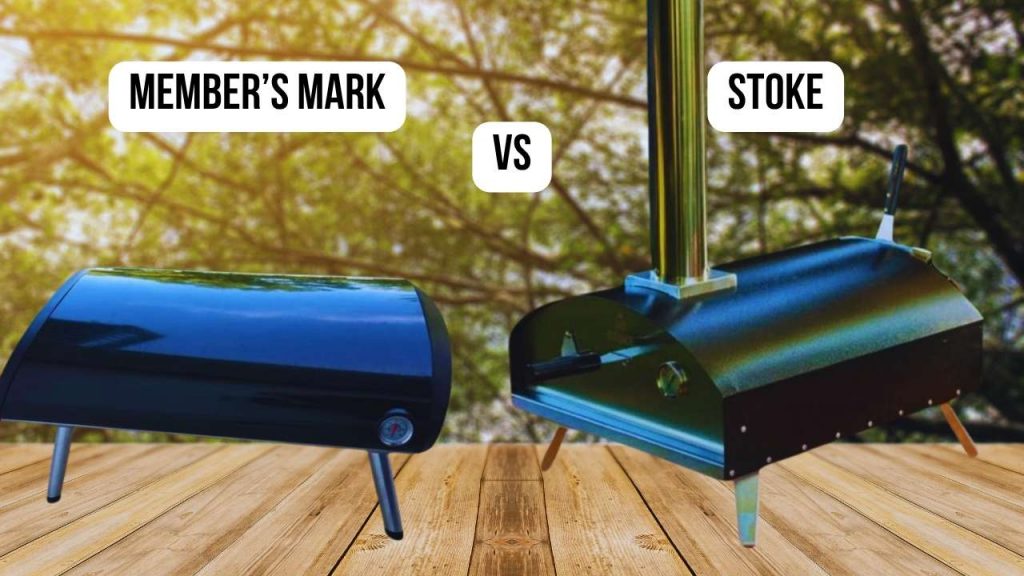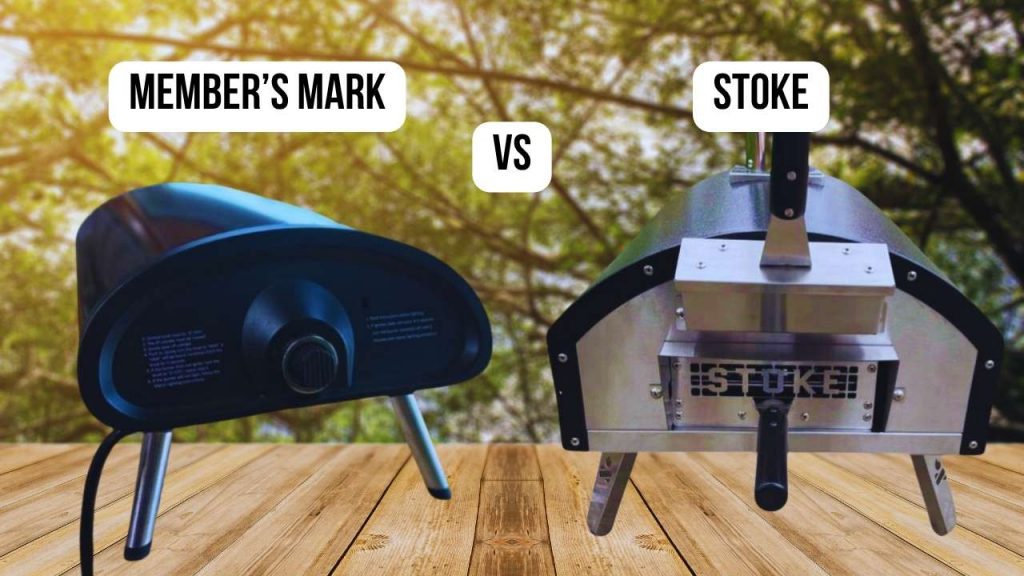I am a restaurant chef with over 10 years of experience at my restaurant, Dequte Restaurant LironBoylston. In this article, I will compare the Member’s Mark and the Stoke pizza ovens, since I’ve personally used both extensively in my kitchen. I evaluated them across several key aspects: quality and materials, temperature control, shape, first-time usage impressions, power source, size, ease of cleaning, and I also conducted a real pizza cooking test to see how long it takes each oven to deliver results. If you’d like to read more about my detailed testing process, you can check out my separate article explaining exactly how I test pizza ovens.
The Member’s Mark pizza oven is a compact, budget-friendly gas-powered model designed for straightforward outdoor cooking. The Stoke pizza oven, on the other hand, is a versatile, modern oven known for combining portability with impressive high-heat performance.
I’ve conducted thorough tests to compare the Member’s Mark and the Stoke, detailed in this article.
Just as a heads up, I will include referral links in this article. If you decide to buy one of these ovens using my links, I’ll receive a small commission at no extra cost to you. This support tremendously helps keep my blog running so I can keep sharing honest reviews and tips.

Member’s Mark VS Stoke: Quality and Materials
| The Member’s Mark Pizza Oven is built with aluminum, stainless steel, and a cordierite stone. While the metal feels thinner than premium brands, the oven is solidly constructed, comes with useful accessories, and delivers reliable performance at an affordable price. |
The Stoke Pizza Oven uses fiber-glass, refectory stone, and stainless steel. While the materials are adequate, some users report paint discoloration and rust over time. Overall, it’s decent quality but feels less refined than higher-end ovens.
|
Member’s Mark VS Stoke: Temperature Control
| The Member’s Mark can technically reach up to 900°F, although in practice it tops out closer to 750°F. It has a delicate flame that requires patience to master, but once you learn it, you can get consistent results. |
The Stoke Wood-Fired Pizza Oven claims to hit 900°F, but in my testing, it struggled to exceed 700°F. Preheating took 45 minutes, and cooking times were longer, which can be frustrating if you want faster bakes.
|
Member’s Mark VS Stoke: Shape
| The Member’s Mark Pizza Oven has a round dome that helps distribute heat evenly across the pizza stone. This shape works well to avoid undercooked spots and gives a uniform bake. |
The Stoke Pizza Oven also has a dome design but includes a tall wall separating the flame from the stone. This design creates more of a heat barrier, which in practice made it harder to get the high temperatures needed for Neapolitan-style pizza.
|
Member’s Mark VS Stoke: First-Time Usage Impressions
| When unboxing the Member’s Mark Pizza Oven, the included peel and accessories felt thoughtful. Assembly was quick and straightforward. Even though it’s budget-friendly, it feels like a complete kit that makes you want to start cooking right away. |
The Stoke Pizza Oven arrived preassembled, which is convenient, but my first impression was that the materials felt average. While easy to set up, it didn’t feel quite as confidence-inspiring compared to more established brands.
|
Member’s Mark VS Stoke: Power Source
| The Member’s Mark is gas-powered, offering steady heat without the hassle of managing wood. This makes it simpler for beginners or anyone who wants low-maintenance cooking. |
The Stoke Pizza Oven offers a wood-fired model (like mine) and a gas option. While the wood-fired setup gives authentic flavor, it takes more practice and longer preheating times to use effectively.
|
Member’s Mark VS Stoke: Size
| Compact and lightweight at 28.7 lbs, the Member’s Mark is one of the most portable ovens I’ve tested. It fits easily on patios and is simple to move or store when needed. |
The Stoke Wood-Fired Oven is slightly larger and heavier, about 40 lbs. It’s still portable but bulkier to reposition. You’ll probably want to pick a spot and leave it there most of the time.
|
Member’s Mark VS Stoke: Ease of Cleaning
| Cleaning the Member’s Mark is fast and straightforward. The stone and interior wipe down easily, and the stainless exterior doesn’t hold onto soot or grease. |
The Stoke Pizza Oven is also easy to clean since it disassembles quickly after cooling, but users should be cautious with the finish, as repeated scrubbing could wear it faster.
|
Pizza Cooking Test

To see how each oven performs in a real kitchen scenario, I prepared a classic Margherita pizza in both the Member’s Mark Pizza Oven and the Stoke Wood-Fired Pizza Oven.
The Member’s Mark Pizza Oven heated up in about 30 minutes. Once it reached roughly 750°F, I launched the pizza onto the rotating cordierite stone. It took about 5–6 minutes to cook the Margherita pizza completely. The crust developed a pleasant golden-brown color and had a nice crispness around the edges, with a soft, chewy interior. The cheese melted evenly, and while it didn’t achieve perfect leopard spotting, the flavor was rich, balanced, and satisfying.
By comparison, the Stoke Wood-Fired Pizza Oven took around 45 minutes to preheat, never quite reaching the claimed 900°F and topping out closer to 700°F in my test. The Margherita pizza cooked in just over 2 minutes, but the bottom crust was noticeably pale and a bit underdone, even though the toppings were well-cooked. The taste was good overall, with a mild smokiness from the wood fire, but the crust lacked the crisp texture I was aiming for.
Overall, while both ovens turned out enjoyable pizzas, the Member’s Mark Pizza Oven delivered a more consistent bake and a better crust texture, even if it took a little longer to finish cooking.
How We Tested
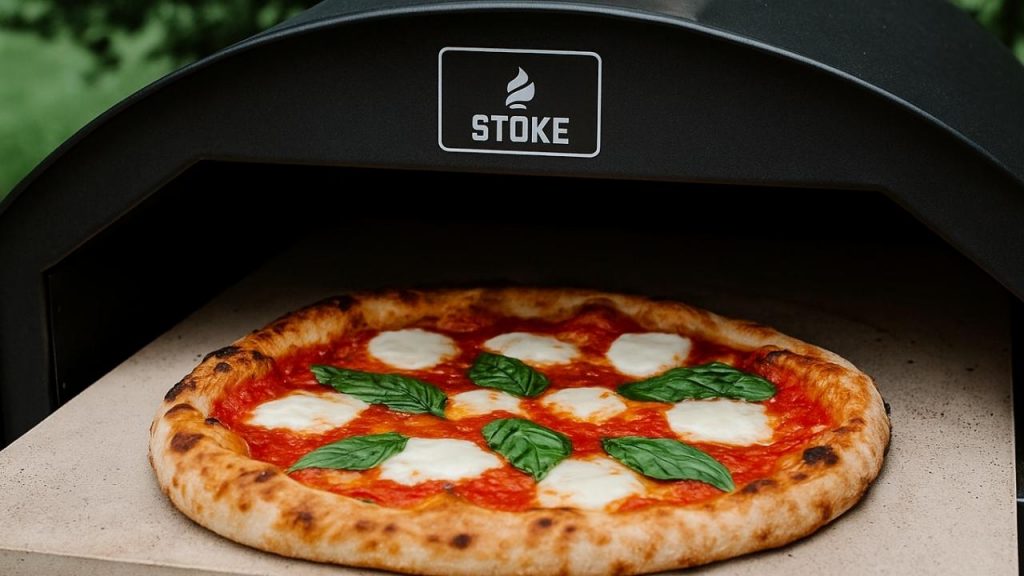
To fairly compare the Member’s Mark Pizza Oven and the Stoke Wood-Fired Pizza Oven, I used the same type of dough and toppings in both ovens. Each oven was preheated to its maximum temperature based on my measurements rather than manufacturer claims. I monitored preheat times with an infrared thermometer to track when the stones reached baking temperature.
Once each oven was ready, I cooked a Margherita pizza in each, timing how long it took for the crust to brown and the cheese to melt properly. I assessed the results by checking the texture and color of the crust top and bottom, the doneness of the toppings, and the overall taste.
After baking, I evaluated how long it took each oven to cool down enough for safe cleaning and whether there were any stubborn residues left on the stones or interior surfaces. This hands-on process gave me a clear, side-by-side understanding of their performance and ease of use.
Conclusion
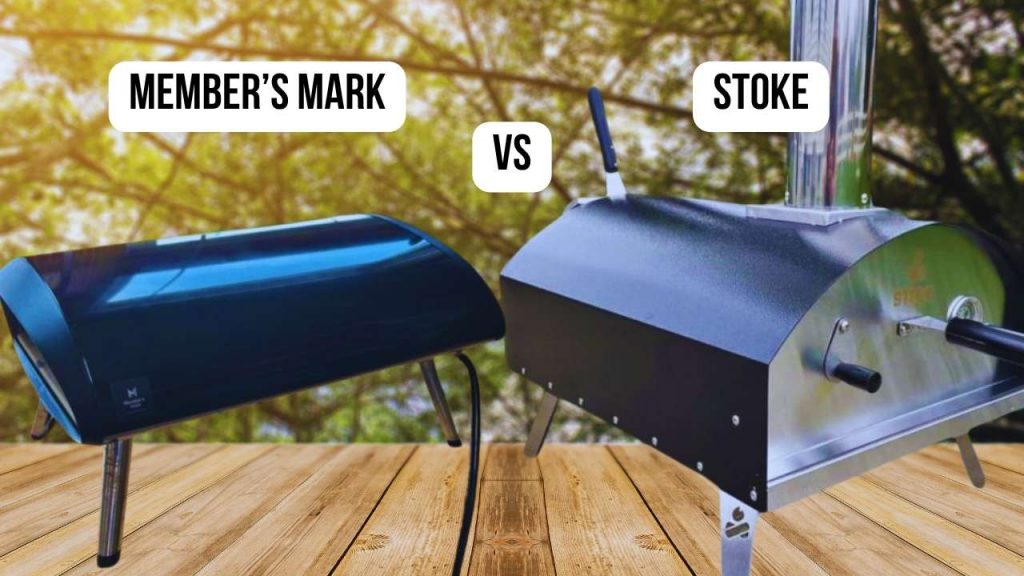
It’s ultimately your choice whether the Member’s Mark or the Stoke is the right fit for your cooking style and budget. Both ovens have their strengths and can help you create delicious pizzas at home. If you decide to buy one, I’d highly appreciate it if you use my referral links for purchasing—this helps support my blog and allows me to keep sharing honest reviews. I’ll earn a small commission at no cost to you. Here are the links: Member’s Mark referral link and Stoke referral link.
Take a minute to review the best pizza ovens.

